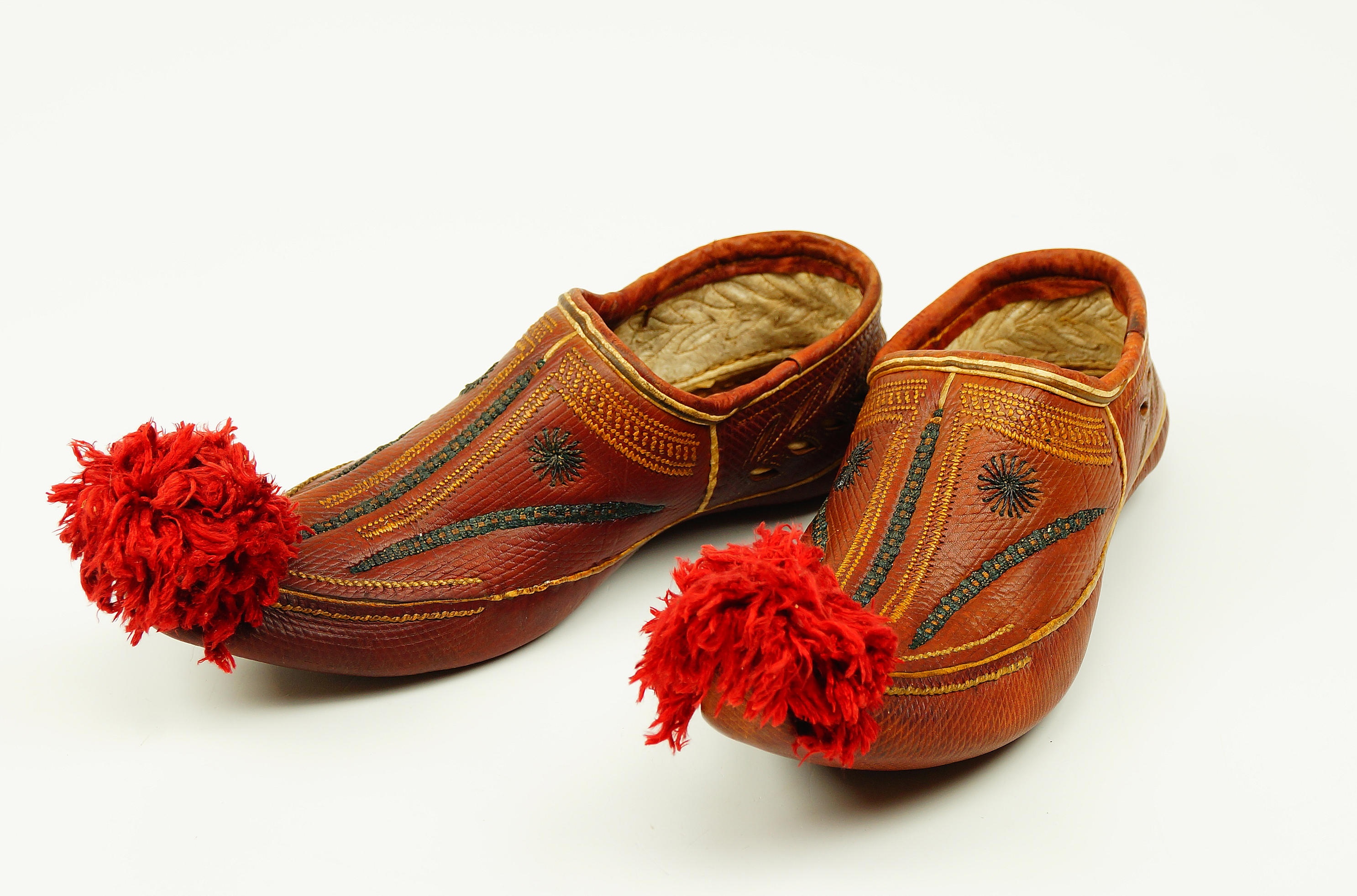Opanken aus rotbraunen, steifen Leder mit eingeprägtem Rautendekor. In ganz geschlossener Form, fast schuhähnlich, indem an die aufgebogene Sohle ein Schaftteil angenäht ist. Fersenteil blattförmig durchbrochen und mit weißem Leder unterlegt.
Nähte, Sohlenrand und Ausschnittkante weiß paspeliert. Ziernähte und. Reihen von Zierstichen mit beigen bzw. schwarzen Leinenfaden ausgeführt. Die Opanken haben eine charakteristische spitze Nase. Die mit einer Wollbommel abgedeckt ist. Die Wollbommel war eine relativ späte Zugabe. Ursprünglich ein Weg, um die Nase wasserdicht zumachen, aber zunehmend ein wesentliches Merkmal für ihre Dekoration zu werden. Opanken sind getragen und wiegen zusammen 304 g.
en

